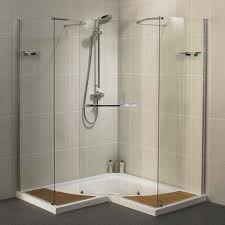Fast and Simple Installation of a New Shower Unit
Fast and Simple Installation of a New Shower Unit
Blog Article
This post following next pertaining to How to Install a Freestand is without a doubt remarkable. Read it for your own benefit and figure out what you think about it.

A successful shower setup calls for mindful preparation as well as a lot of work. For the most part, you will need to do three types of jobs: framing wall surfaces, setting up the plumbing, and completing walls.
Prep work
Firstly, you have to choose the type of shower that you wish to set up. It is very important to identify whether the chosen shower can handling particular systems and can control a secure degree of water through the boiler. A lot of shower devices nowadays are designed to be versatile to different water pressures (such as stored hot water as well as chilly keys).
It is additionally crucial to take into account the water pressure and also the planning of the piping as well as water drainage for the shower
Various Types of Shower Units
Technique
Depending on the type of shower you desire to set up, the shower head should either be fitted in order to prevent its contact with the water in the bath below or the base tray, or it has to have a check shutoff.
Before starting, it is advisable to mark the positions of the shower head as well as control, as well as to prepare the pipe-work entailed. Furthermore, the drainage system to get rid of the drainage will need to be intended. Both positions of the cable television course as well as the shower switch will additionally need to be taken into consideration if an instant or electrical shower device is being installed.
Make use of the instruction guide supplied with the shower device to fit the shower control.Before fitting the pipelines that will provide the water to the shower system, it is important to cut off the water. In order to protect the pipes, they should be given a water resistant covering and likewise fitted with isolating valves. The pipes can after that be hidden right into the wall and glued over to neaten the general look.
Fit the base tray, shower head, and also installations.
Link the main shower control to the pipelines that will certainly be providing the water (This may need a female screw string adapter).
Reconnect the water system as well as examination the pipelines for any leaks, as some may need firm.
If you are setting up an electric shower, keep in mind to turn off the power supply prior to making any electric links. When these connections have been made (there need to be advice within the user's manual), the power supply can be changed back on.
Adjusting Water Stress to Fit Your Shower
The cold water storage tank can be raised to a better height (sometimes just 150mm (6inches)) by fitting a solid wooden assistance below it - perhaps composed of struts as well as blockboards. If you select this alternative, the primary and also distribution pipelines will certainly also have to be elevated to fulfill the new height of the reservoir.
Conversely, a booster pump (a single pump or a dual/twin pump) can be fitted. Whichever kind is selected, it should be attached into the power supply in order to run.
Piping and Water drainage
It is best to make use of 15mm diameter supply pipelines, and make the runs to the shower as brief and straight as feasible so regarding preserve optimal pressure and reduce heat loss. In addition, by minimising using arm joints for pipeline corners, you can reduce the resistance in the circulation of the supply of water. You can accomplish this by bending the pipes rather.
A Lot Of Usual Mistakes
How Do You Install a Shower? Follow This Guide
Installing a Shower at a Glance
Tools & Materials: Level, electric drill, caulk, hole saw, cedar shims, shower unit Step 1: Drill pilot holes Step 2: Prep fixture holes Step 3: Move unit into place Step 4: Caulk corners and base Step 5: Attach door Step 6: Install shower pan Whenever plumbing is involved in a DIY project, people worry about what might go wrong. The truth is that installing a shower isn’t that complicated, and you can save a lot of money by doing it yourself. You shouldn’t need to make any alterations to your plumbing to complete the job, and most of the tools you need will be provided in your new shower kit.
Can I Install a Shower Myself?
Even if you’ve never installed a shower before, you’ll find this to be a project that is perfectly suited for DIYers with a moderate level of experience. Whether you're doing a bathtub conversion or installing a new stall, most of what you need comes in shower kits that you can purchase from a hardware store. The first thing you need to do is determine what type of shower stall you want.
Single-panel stalls are the easiest to install because they come preassembled. All you need to do is put them in place. Multi-panel showers require a few additional steps, but you’ve got more control over the appearance of your unit. Multi-panel units are also much easier to handle if you’re going to do the installation without any help.
Be sure to take all appropriate safety precautions, such as wearing eye protection and gloves. When you’re removing or installing a shower unit, you might kick up debris that could hurt your eyes. You’ll also need to work with equipment that will get extremely hot, so be sure to have safety gloves handy.
Tools and Materials
2- to 4-foot level Electric drill with a 1/8-inch drill bit Caulk 2-inch hole saw Cedar shims The unit itself Before You Begin: Prep the Space
It’s highly important to measure your space accurately before putting the stall in. Measuring from the floor upward and from each corner outward will ensure you’ve got the right measurements. What you’re looking for is where the plumbing apparatuses are going to come through the stall. Transfer these measurements over to the back of your unit by drawing the locations of these holes using a pencil or marker.
Pull out your old shower and make sure to scrape off all the old caulking. Be thorough because you want to work with smooth surfaces for the best installation. Once you’ve pulled out your existing shower, you need to make sure that the floor is clean and dry. The best way to clean debris is with a shop vacuum, as it’ll soak up water and dirt together.
If you’re experiencing any plumbing issues, such as low water pressure, this is a perfect opportunity to solve them. Make sure that the pipes themselves are not in need of patching and clean your showerhead. When you turn the water back on after your project, check the pipes for signs of wear or disrepair. Anything beyond minor repairs should be handled by a plumber, and this is the best time to bring in a professional.
If the floor has any moisture at all, don’t proceed until it’s completely dry. The last thing you need is for the floor to rot or invite mold and mildew into your base. Once everything is dry, apply waterproof wallboard to the walls. This can be attached with screws or nails, then sealed with caulk so that water doesn’t seep into any crevices.

We were introduced to that article on How to Install a Direct-to-Stud Shower Enclosure from a good friend on a different web property. Do you know somebody else who is interested by the topic? Why not share it. Thanks a lot for your time. Visit again soon.
Book 24/7 Report this page